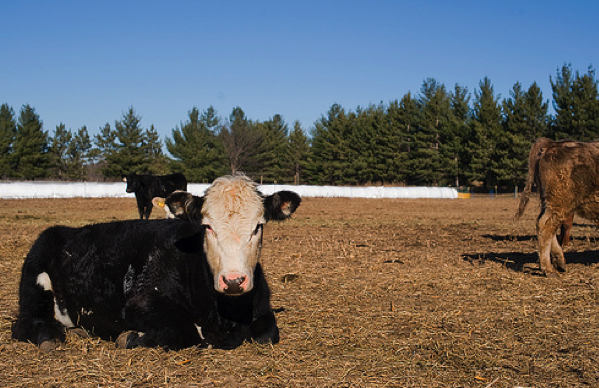Thousand Hills Cattle Company, a leading producer of grass fed beef in the Midwest, has its work cut out for it.
First of all, there’s the cost of their product. Although their cattle are relatively inexpensive to raise, according to founder Todd Churchill (they just eat grass, right?), the cost of transporting, processing, packaging, and shipping 24 grass-fed cattle each week is enormous - there’s just not much economy of scale. By the time it gets to the grocery store or co-op, Thousand Hills beef costs more than its corn fed (non-organic) counterparts, nearly every time.
Then there’s the beef itself. Incredibly flavorful and delicious when prepared correctly (see: The Birchwood Cafe, The Strip Club), grass fed beef is leaner than its corn-fattened rivals, so it’s easy to overcook. This means that if you buy Thousand Hills beef and expect it to be foolproof, you risk turning it into tough, dry shoe leather.
So here’s the question: who wants to support a business that requires people to not only pay more for their meat, but also to learn a new way to cook it?
The answer: I do.
Why? It's simple. Grass fed beef is great. It tastes great when it’s prepared right. It’s lower in cholesterol, saturated fats, and calories per serving than grain fed beef. It’s humanely raised, as happy as meat gets.
Thousand Hills’ 24 cattle per week come from a variety of farms in Minnesota, Wisconsin, North Dakota, South Dakota, and the northeast part of Nebraska. Each location is located within 6 - 8 hours driving distance of Lorentz meat processing plant in Cannon Falls, MN. The reasons for this are practical: cattle need food and roaming room every 8 hours to stay content, so the shorter trip helps Thousand Hills keep their cattle happy and their costs down.
When I met with Churchill and Todd Lein, who leads Sales and Marketing for the company, at their Cannon Falls, MN headquarters recently, they spoke in practical terms. In order to produce the best beef possible, they say, they need to make sure their cows don’t suffer too much stress. The cattle are moved to different grazing areas every six months or so, so they’re used to climbing into a truck and optimistic that they’ll find new grass to eat at the next destination. (When cattle are about two years old, they climb into the truck headed for Lorentz processing plant, supposedly stress free. They come back in packages.)
 Photo Credit(s): Kate NG SommersSome Perspective
Photo Credit(s): Kate NG SommersSome Perspective
The cattle industry is enormous. Staggering. McDonald’s serves its customers 2 million pounds of beef every single day. Beef Products Inc. (BPI) produces more than 10 million pounds of beef per week. By any industrial measure, Thousand Hills Cattle Company - and the 24 cattle they produce each week - is tiny, insignificant.
But those 24 head a week make Thousand Hills the largest Midwestern player in the grass fed field, with beef available at Twin Cities co-ops, Kowalski’s Markets, even Cub Foods. This inevitably raises a few questions. Does Thousand Hills belong at Cub Foods? Are they local enough? Are they becoming a big business?
The Todds are unapologetic. “If the goal is to get more people to buy good, grass-fed beef,” Lein says, “then people should be able to get it at the co-ops, at Byerly’s, and at Cub Foods.” I don’t disagree. In order to make good food accessible, we need to find ways to get it into the mainstream, to sell it where people buy. But with great expansion comes great responsibility, and Thousand Hills will need to continue to convince consumers that they’re the same great company - with the same great values - they were when they started. They appear to be up to the challenge.
Lein and Jeff Peterson, Director of Operations, take me to the large freezer where the meat is stored before shipping. They show me the bar codes on each package and the labeling system that ensures each package of meat can be traced back to its original source. They don’t promise me that their beef will never have issues - they’re too smart to commit to the impossible - but they are confident that they can identify any issues quickly, trace them back to their sources, and limit consumer risk. McDonald’s serves millions of pounds of beef each week; if some is tainted, many people will be sick before the issue is discovered. This is just simply not the case with Thousand Hills beef - the company does its best to operate like the small independent farmers who make up their co-op.
Tomorrow, another look at Thousand Hills Cattle Company and What it Means to Eat Local Food.




